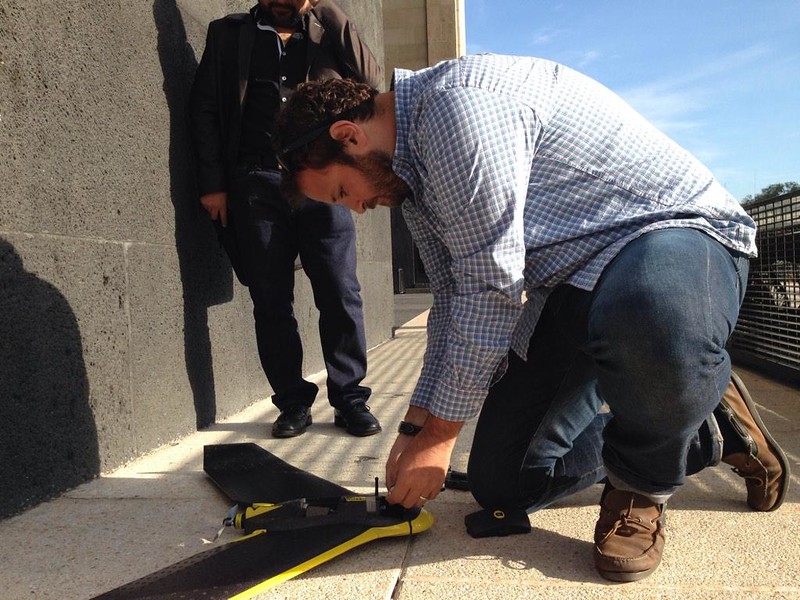We just added 43,000 km of brand new 10cm orthoimagery, covering all of Denmark, to Mapbox Satellite. We sourced the imagery from the Danish Geodata Agency and rolled out updates across the country of Denmark.
<p>We just added 43,000 km<sup>2</sup> of brand new
10cm orthoimagery to Mapbox Satellite. We sourced the imagery from the <a href="http://www.gst.dk/">Danish
Geodata Agency</a> and rolled out updates across the country of Denmark. Part of the Danish government's <a href="http://www.digst.dk/Servicemenu/English/Policy-and-Strategy/eGOV-strategy">eGovernment strategy 2011-2015</a>, the imagery is released <a href="https://www.mapbox.com/blog/trouble-with-geoportals/">openly and
accessibly</a> via Denmark's basic data program.</p><p><img alt="" src="https://farm3.staticflickr.com/2950/15285033538_32158c9357_b.jpg"></p><p><em class='quiet small'><a href="http://en.wikipedia.org/wiki/Kastellet,_Copenhagen">Kastellet</a>,
in Copenhagen, is a classic star fortress, designed so that any
attacker approaching one wall could be fired upon from at least one
other wall. It included grassy areas in order to feed animals so it
could last longer under siege. A <a href="http://www.copenhagenpictures.dk/kastel.html">Danish website</a>
remarks that: "The fact that some of the cannons actually point toward
Copenhagen itself is due to King Christian III's concept of how to rule
a country."</em></p><p>With this imagery's 10 centimeter-per-pixel resolution, we can do much more than <a href="http://www.cnbc.com/id/38722872">count cars in parking lots</a>:</p><p><img alt="" src="https://farm4.staticflickr.com/3945/15285650800_6cffeee788_o.jpg"></p><p><em class='quiet small'><a href="http://en.wikipedia.org/wiki/Kultorvet">Kultorvet
Square</a>, where the philosopher Søren Kierkegaard lived as a student,
was recently redesigned by the local architecture/design firm <a href="http://www.polyformarkitekter.dk/english/">Polyform</a>.</em><p><p><img alt="" src="https://farm3.staticflickr.com/2949/15472015942_c6228a6041_o.jpg"></p><p><em class='quiet small'>Zoomed all the way in, we can see not just cars but bicycles,
and which café tables are occupied.</em></p><p><img alt="" src="https://farm6.staticflickr.com/5612/15473088705_5dbc792127_o.jpg"></p><p><em class='quiet small'> In this image, we see rooftop solar installations, trampolines, and one fish pond that would be easy to confuse with a trampoline at a lower resolution. The number of trampolines amazed us when we started rendering the imagery. In some neighborhoods, we counted a 40% household trampoline ownership rate. Denmark is truly a kind of paradise.</em></p><p>Today's rollout includes the most recently captured aerial
photography available, with more than half of the imagery captured within the past year.</p><ul><li><strong>2014</strong>: Albertslund, Allerød, Ballerup, Brøndby, Dragør, Egedal, Fredensborg, Frederiksberg, Frederikssund, Furesø, Gentofte, Gladsaxe, Glostrup, Gribskov, Halsnæs, Helsingør, Herlev, Hillerød, Hvidovre, Høje-Taastrup, Hørsholm, Ishøj, Københavns, Lyngby-Taarbæk, Rødovre, Tårnby, Vallensbæk, udersdal, Faxe, Greve, Kalundborg, Køge, Næstved, Odsherred, Roskilde, Solrød, Sorø, Stevns</li><li><strong>2013</strong>: Hedensted, Herning, Holstebro, Horsens, Ikast-Brande, Lemvig, Ringkøbing-Skjern, Silkeborg, Struer, Assens, Faaborg-Midtfyn, Kerteminde, Langeland, Middelfart, Nordfyns, Nyborg, Odense, Svendborg, Ærø, Bornholms, Guldborgsund, Holbæk, Lejre, Vordingborg</li><li><strong>2012</strong>: Brønderslev, Frederikshavn, Hjørring, Jammerbugt, Læsø, Mariagerfjord, Morsø, Rebild, Thisted, Vesthimmerlands, Aalborg, Skive, Viborg, Sønderborg, Tønder, Vejle, Aabenraa</li><li><strong>2011</strong>: Favrskov, Norddjurs, Odder, Randers, Samsø, Skanderborg, Syddjurs, Århus, Billund, Esbjerg, Fanø, Fredericia, Haderslev, Kolding, Varde, Vejen</li></ul><p><img alt="" src="https://farm4.staticflickr.com/3939/15285033898_573349be62_h.jpg"></p><p><em class='quiet small'>The town of Svogerslev, a suburb of Roskilde. Wind turbines are
scattered around the area. Denmark was an early adopter of wind power,
which today supplies about 33% of grid power, and is on track to reach
50% by 2020. On stormy days over the last year, Denmark produced more
electricity from wind than the entire country consumes and sold surplus energy to Germany and Norway.</em></p><p><img alt="" src="https://farm6.staticflickr.com/5615/15284776509_68f9dcbccd_b.jpg"></p><p><em class='quiet small'><a href="http://en.wikipedia.org/wiki/Middelgrundsfortet">Middelgrundsfortet</a>
is a sea fort between Copenhagen, the capital of Denmark, and Malmö,
a Swedish city across the Øresund strait. The strait has been
strategically vital from early Viking history to WWII, when Danish Jews
were smuggled across it to Sweden. From 1429 to 1857, it cost money to
pass through – the <a href="https://en.wikipedia.org/wiki/Sound_Dues">Sound Dues</a>. Middelgrundsfortet was built in the 1890s as part of Copenhagen's
defense perimeter, and was only retired late in the Cold War, by which
time it was an antiaircraft installation. <a href="http://www.vladi-private-islands.de">Valdi Private Islands</a> lists
it at a <a href="http://www.vladi-private-islands.de/en/island+buy+middelgrunds-fort+denmark+europe-atlantic-ocean/">
rumored price of about $20 million</a>.</em></p><p><img alt="" src="https://farm6.staticflickr.com/5600/15471249672_e81bbb9c6b_b.jpg"></p><p><em class='quiet small'><a href="http://en.wikipedia.org/wiki/Amalienborg">Amalienborg</a> is the
winter residence of the Danish royal family. It consists of four
semi-separated rococo palaces facing a plaza featuring a huge statue
of King Frederick V on a horse, visible here in shadow.</em></p>






























 Red dots show buildings added by HOT mappers in just one week
Red dots show buildings added by HOT mappers in just one week HOT’s task manager divides big areas into smaller mapping tasks and lets experienced mappers verify data quality
HOT’s task manager divides big areas into smaller mapping tasks and lets experienced mappers verify data quality Our updated Don’t Fly Drones Here map, with TFRs added as orange zones.
Our updated Don’t Fly Drones Here map, with TFRs added as orange zones.  TFRs blanketed the Windy City due to the President’s movements.
TFRs blanketed the Windy City due to the President’s movements.


